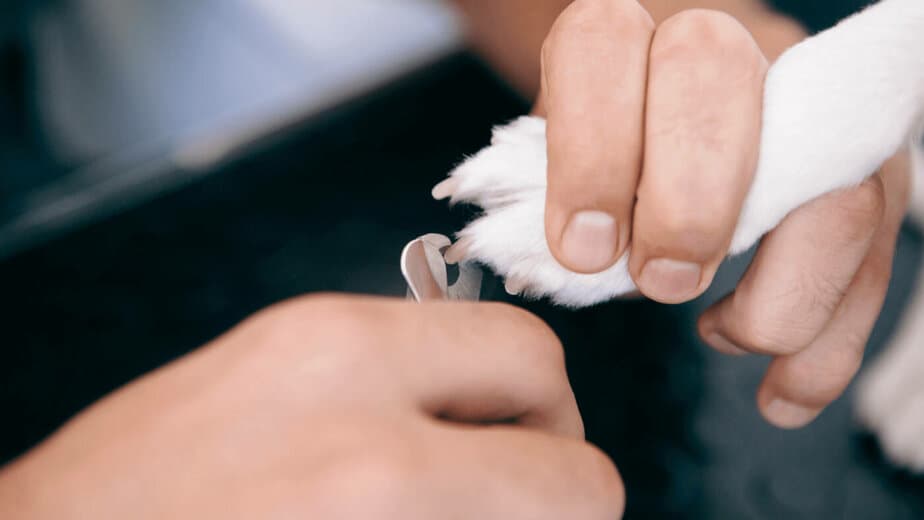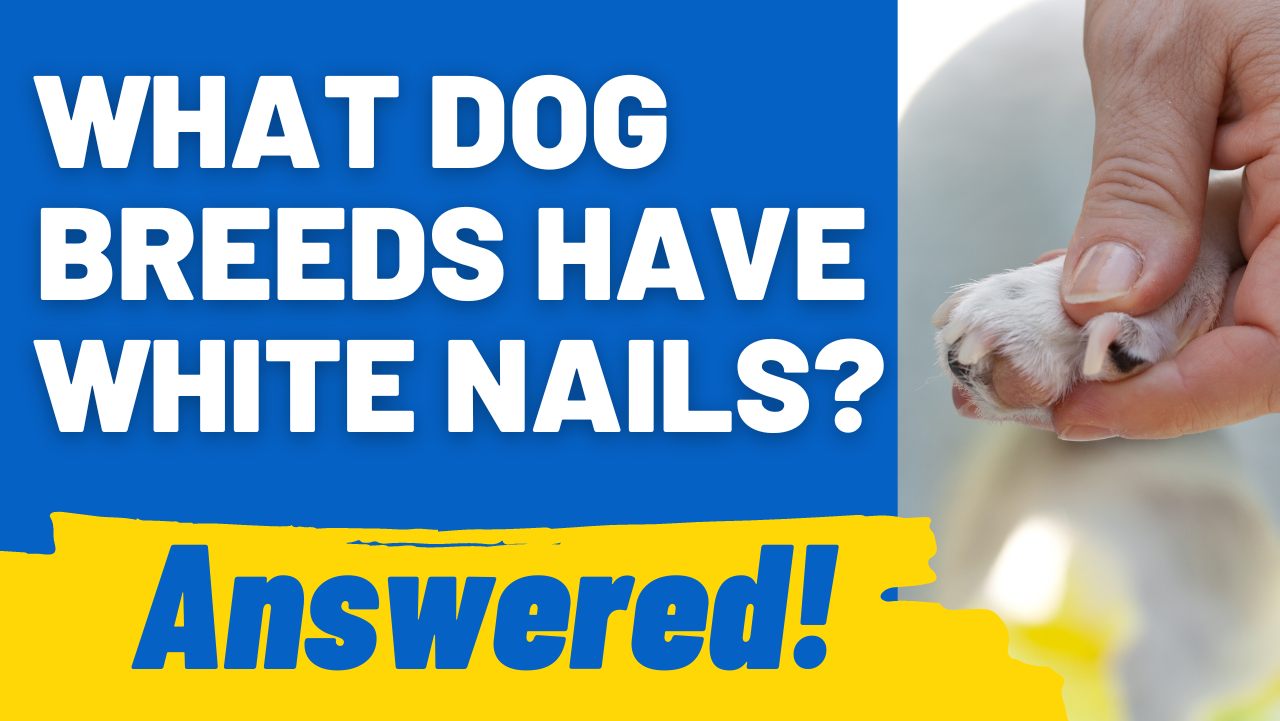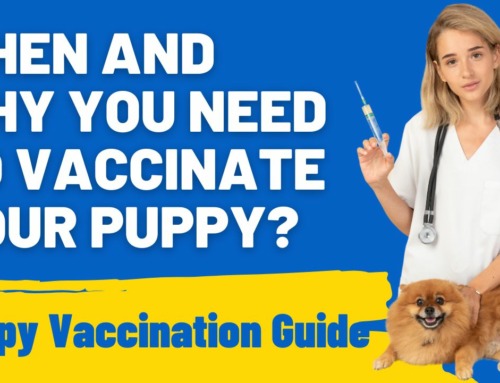As a dog owner myself, I know how imperative it’s to avoid costly illnesses and keep your pooch happy.
There are times when our pups can behave oddly or show something unusual. These maverick signs tell us that some malady running amock in our precious pets.
Although, in rare instances, some could be cosmetic, like whitening of the nails. This unusual occurrence can show in any canine, but certain breeds tend to be more prone than others.
Which Breeds Are Most Prone to White Nails?
Besides heredity, the environment is another factor in dogs’ white nails. Some breeds that tend to have white nails are:
1. Samoyed
A fluffy white pup, a samoyed has a good chance to exhibit pink paws and clear nails.
Samoyed’s nail care is straightforward. Yet, their quick, in particular, can grow quickly if you allow their nails to overgrow.
An ordinary clipping routine every month or two is ideal. This habit will maintain a healthy length for Samoyeds’ nails.
2. Siberian Husky
The Siberian Husky is another breed that can come in white or other light colors. Like the Samoyed, this dog has exhibited pink paws and clear nails.
Huskies are big hounds bred for living with nature. As long as you can provide plenty of exercise, you don’t need to worry about nail trimming.
3. Alaskan Malamute

This large dog was bred for sledding in deep snow. A domesticated Alaskan Malamute will need regular nail trimming.
Keep its nail length at bay to avoid infections or limping.
Unlike the Havanese, this breed’s dewclaw is present in the hind legs. These pointless claws are often removed to improve their quality of life.
4. Akita
Akitas are either white or a shade of brown. Sometimes, they’re in between.
This large breed always has white fur on its legs. Likewise, its nails may come light in color or clear.
As fast as they grow, Akita’s nails need regular cutting back. Plenty of playtimes may not suffice to keep their nails at the proper length.
Being stubborn, Akitas aren’t easily trained. It’s best to start them as young as eight weeks old.
5. Havanese
Havanese, a small breed from Cuba, is lovable and full of affection. Yet, they need plenty of work to maintain health and appearance.
The Havanese can show black or clear nails. Keep them trimmed weekly to avoid discomfort for your Havanese.
If their black nails prove challenging, nip a little at a time until the surface darkens. That sign is for you to stop before you nick the quick.
6. Shih Tzu
Another breed identical to the Havanese, the Shih Tzu loves attention. They also require plenty of care, especially with their pincers.
Shih Tzu nails may come in creamy white color. In this case, it’ll be easy to find the pink quickly.
Overgrown nails on a Shih Tzu can bring serious harm.
One of the inflictions is curling. This unwanted shaping can cause breakage or poke at your pooch’s pads.
How to Make Nail Grooming a Habit
In addition to a dog nail cutter, treats are handy for comforting jumpy dogs. Use frequently as you gently introduce the clippers to your dog.
For pig-headed pups, easing them into habits at a young age is best.
What Color Should Dog Nails Be?
In any breed of canine, pigmentation is commonly uniform across its body. This color scheme is notably true between paw pads and nails.
Peek at your puppy’s feet. Black pads will show black nails, but pink pads will mean lighter or translucent nails.
If yours got the latter, rejoice! Grooming will prove to be twice effortless.
The markings are an exception. Another exclusion is when there’s a genetic anomaly in your dog’s natural color production.
Are Dogs’ Nails Different Colors?
You might experience a nail or two adversely dyed like the peculiar heterochromia. This uncommon affliction causes a different color for each eye.
The same goes for nail color. Due to heredity, pigmentation may differ by a digit or two.
What Do Healthy Dog Nails Look Like?
Without health problems, your dog’s nails will have a tint akin to its paw pads.
Other than being dark in color, a white tint may sandwich dog nails. It’s quite similar to ours.
What’s important is keeping them trimmed properly. Overgrown nails can impact your pup’s health.
You should prune dog nails often. Beware not to nip the quick, veiny part in the nail.
What to Mind in Times of Grooming

Groomers are god-given places that hurry healthy living for dogs. Even still, you may do the occasional snippings in-between visits.
This extra care is notably true for active pooches whose nails and locks develop more quickly.
What to Monitor in an Active Canine
A playful and energetic pup is a sign of good health. That also means that you have to be wary of your pal’s footing.
As they can be running on anything like dirt, grass, or even puddles, they’re at risk of foreign bacteria. Being so sprightly also means more chances of wear on their nails.
Always maintain the routine of inspecting your pup’s nails. This way, you can find any incidental effects of wear or breakage after a spirited playtime.
If you do see something curious, it’s always a good idea to consult your vet. Vets can provide you with the most accurate details and solutions to problems that may arise.
What Will Hurt my Dog?
Infections. Either bacterial or fungal, an infected dog will suffer without the right care. See your vet right away if you notice odd appearances or conduct.
Your pal may break a nail, which is a welcoming spectacle to outside invaders. Expressly for bleeding, treat with antiseptics made for dogs. Make sure to dry completely and cover with styptic powder.
You may wrap their feet with a bandage or use a sock as necessary.
If your pup smooches its paws more often than normal, that is okay. It’s only trying to comfort itself. When the kisses start to turn into chews, be alert and ready to run to your vet. This gnawing on paws is your pooch telling you, “I’m sad and allergic to something.”
Mostly, an itchy paw signifies a skin allergy. If not, something more dreadful like melanoma or cancer. For cancer, swelling takes place in the toes of canines.
Chronic infections on the toes and skin can signify diabetes. Excessive weight loss and hydration are also prime signs of diabetes.
Finally, brittle nails in healthy mutts show an uneven diet. You may need to provide more quality meals for your fella.
Whichever dog food you pick, make sure it’s rich in good fats, protein, and minerals. Don’t forget to pair it with a bowl of ample water.
Are There Dog Supplements?

You also have the option to supplement your mutt’s feedings. Focus on augmenting with glucosamine, fish oil, and probiotics.
Glucosamine will improve function. This nutrient encourages play and exercise.
Fish oil will not only beautify your pooch’s coat but will also help protect them from allergies.
Probiotics are as rewarding to dogs as it’s to us. All kinds of forms for this supplement are available. Promote good bacteria in their bodies with regular intake.
Wrapping Up
Although most dogs have dark-colored nails, we know some breeds can exhibit otherwise. For what dog breeds have white nails, it all depends on heredity.
With that said, most dogs can have white nails. When it comes to the change in nail color, this odd event can be a sign of unwanted causes.
As stated, the benefits of proper nail care on Dogs are foremost. Good habit means trimming back your dog’s nails.
Keep an eye on the signs we saw earlier to maintain your canine’s health.




